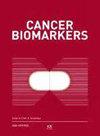Urinary VOCs as biomarkers of early stage lung tumour development in mice
IF 2.2
4区 医学
Q3 ONCOLOGY
引用次数: 0
Abstract
BACKGROUND: Lung cancer is the primary cause of cancer-induced death. In addition to prevention and improved treatment, it has increasingly been established that early detection is critical to successful remission. OBJECTIVE: The aim of this study was to identify volatile organic compounds (VOCs) in urine that could help diagnose mouse lung cancer at an early stage of its development. METHODS: We analysed the VOC composition of urine in a genetically engineered lung adenocarcinoma mouse model with oncogenic EGFR doxycycline-inducible lung-specific expression. We compared the urinary VOCs of 10 cancerous mice and 10 healthy mice (controls) before and after doxycycline induction, every two weeks for 12 weeks, until full-blown carcinomas appeared. We used SPME fibres and gas chromatography – mass spectrometry to detect variations in cancer-related urinary VOCs over time. RESULTS: This study allowed us to identify eight diagnostic biomarkers that help discriminate early stages of cancer tumour development (i.e., before MRI imaging techniques could identify it). CONCLUSION: The analysis of mice urinary VOCs have shown that cancer can induce changes in odour profiles at an early stage of cancer development, opening a promising avenue for early diagnosis of lung cancer in other models.尿中挥发性有机化合物作为小鼠早期肺癌发展的生物标志物
背景:肺癌是癌症导致死亡的主要原因。除了预防和改进治疗外,越来越多的人认为早期发现是成功缓解的关键。目的:本研究的目的是鉴定尿液中的挥发性有机化合物(VOCs),以帮助诊断早期发展阶段的小鼠肺癌。方法:我们分析了基因工程肺腺癌小鼠模型尿液中VOC的组成,该模型具有致癌EGFR多西环素诱导的肺特异性表达。我们比较了10只癌变小鼠和10只健康小鼠(对照)在强力霉素诱导前后的尿液挥发性有机化合物,每两周进行一次,持续12周,直到癌变完全发生。我们使用SPME纤维和气相色谱-质谱法来检测与癌症相关的尿液挥发性有机化合物随时间的变化。结果:这项研究使我们能够确定八种诊断性生物标志物,这些标志物有助于区分癌症肿瘤发展的早期阶段(即,在MRI成像技术能够识别它之前)。结论:对小鼠尿液挥发性有机化合物的分析表明,癌症可以在癌症发展的早期诱导气味谱的变化,为其他模型的肺癌早期诊断开辟了一条有希望的途径。
本文章由计算机程序翻译,如有差异,请以英文原文为准。
求助全文
约1分钟内获得全文
求助全文
来源期刊

Cancer Biomarkers
ONCOLOGY-
CiteScore
5.20
自引率
3.20%
发文量
195
审稿时长
3 months
期刊介绍:
Concentrating on molecular biomarkers in cancer research, Cancer Biomarkers publishes original research findings (and reviews solicited by the editor) on the subject of the identification of markers associated with the disease processes whether or not they are an integral part of the pathological lesion.
The disease markers may include, but are not limited to, genomic, epigenomic, proteomics, cellular and morphologic, and genetic factors predisposing to the disease or indicating the occurrence of the disease. Manuscripts on these factors or biomarkers, either in altered forms, abnormal concentrations or with abnormal tissue distribution leading to disease causation will be accepted.
 求助内容:
求助内容: 应助结果提醒方式:
应助结果提醒方式:


